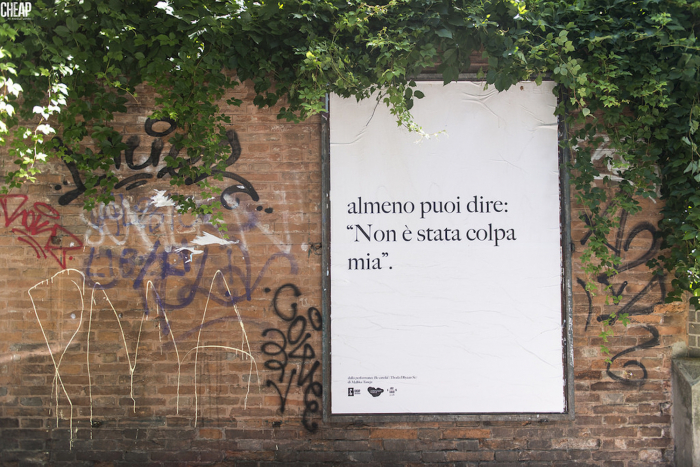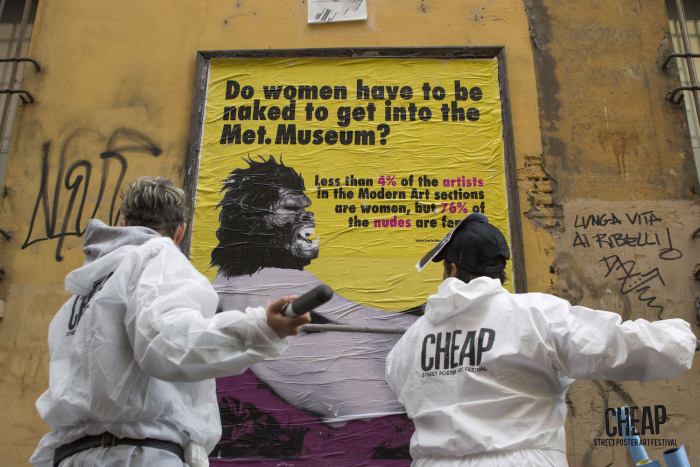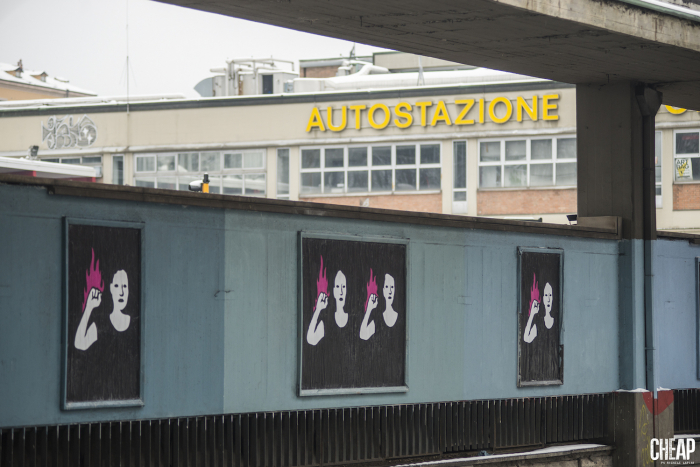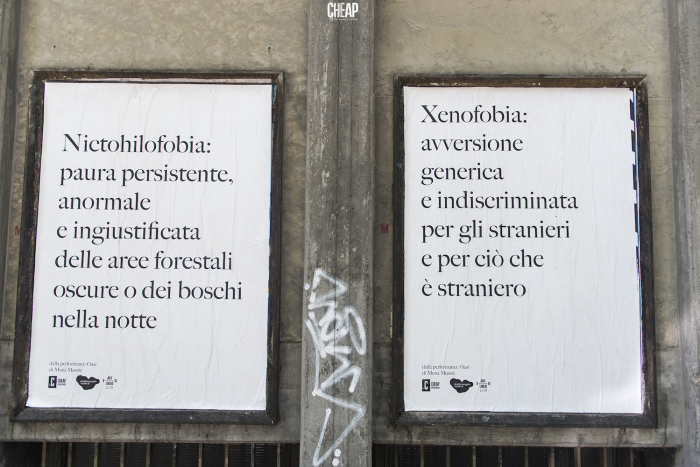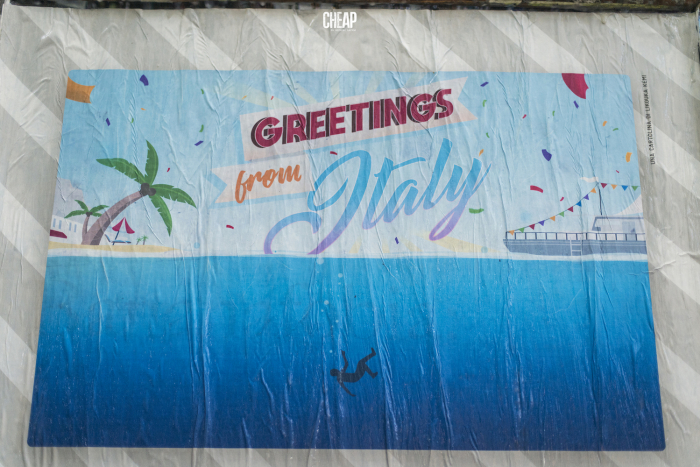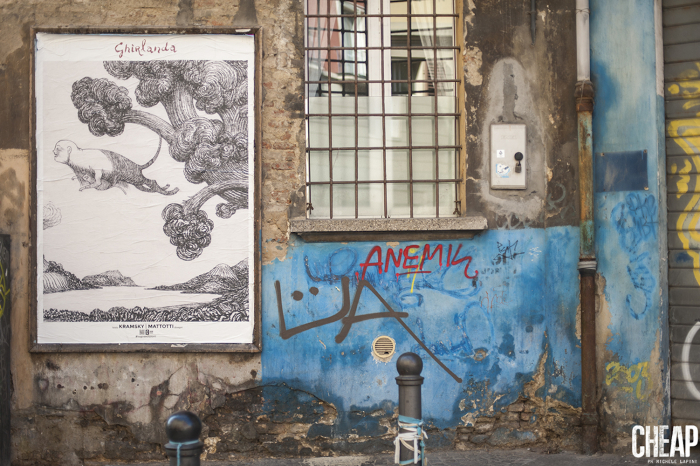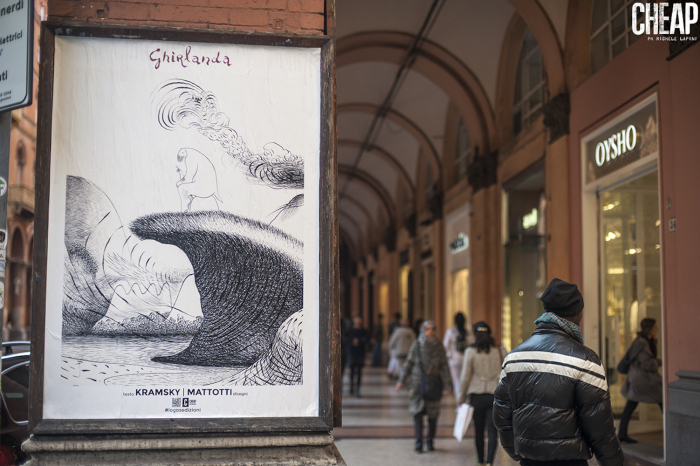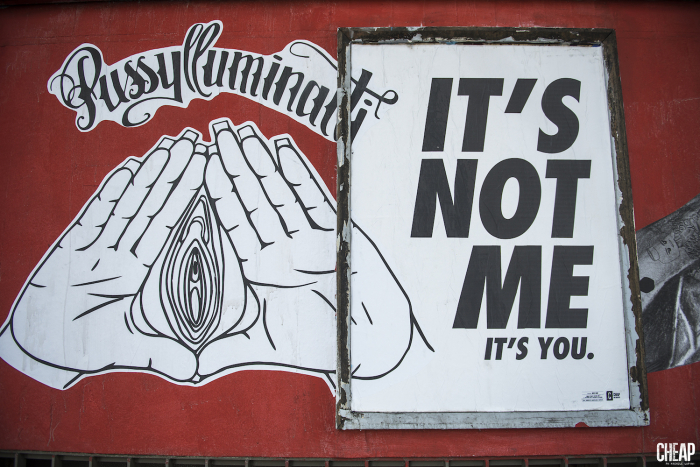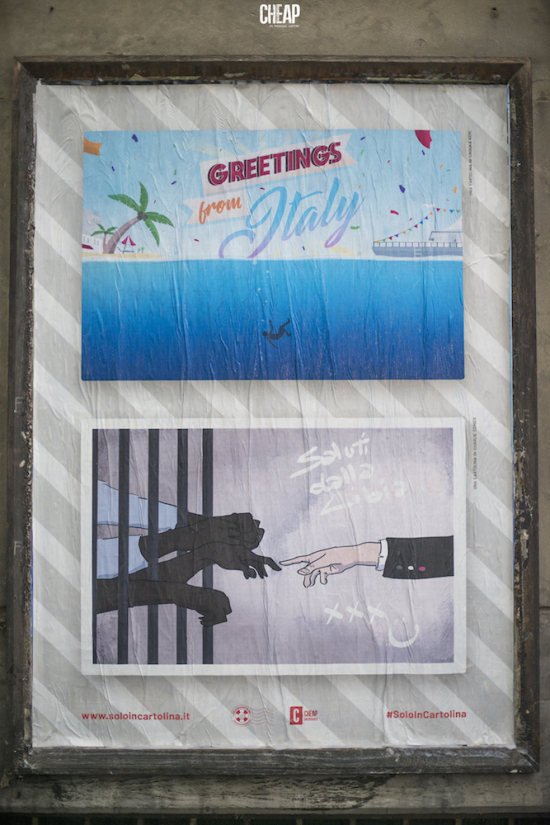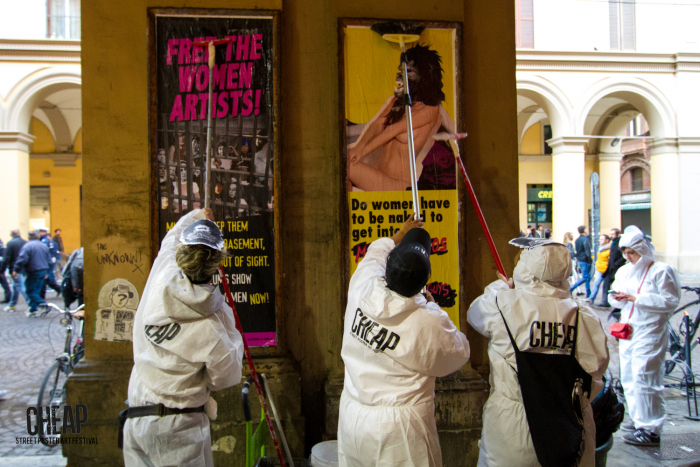CHEAP
by Lina Vergara Huilcamán
If you have ever been in via Indipendenza in Bologna, you are likely to have noticed a few poster billboards with an unusual content. They are all by CHEAP. Who is CHEAP? I wondered many years ago before I got acquainted with them. What does CHEAP do? I wonder sometimes when I look at the new interventions on their Facebook page at night. It is a group of six women: Antonella Ciccarelli, Sara Manfredi, Sonia Piedad Marinangeli, Elisa Placucci, Flavia Tommasini, Elisa Visentini. I have interviewed Sara for you and you find her words below:
“We met in Bologna. We knew each other, we spent time together and we were devoting ourselves to other things when we started talking about this. Many of us have a background in self-management and there is also an artistic duo (TO/LET of Sonia and Elisa P.) that had already made some street art before and independently of CHEAP. Together we felt the desire to explore a particular form of urban art or street art—call it whatever you want, I have stopped calling it at all—which is paste-up: the use of paper and glue. A very fragile and absolutely temporary medium that somewhat defines and directs the choice of our name and identity: CHEAP, something of little worth. We have chosen a mock-heroic name precisely because such is our own attitude, an anti-monumental attitude and therefore paper that melts, something that is worn out, that is temporary, and above all something that in no way is going to hold out against time, rain, against some passers-by who may tear it up.
We wanted CHEAP to be a means to know the town and test it, even to bother, and provoke it. If you want to work in a neighbourhood where you do not live, placing artworks in a specific social architectural and urban environment, you should study and understand where you are, you should understand what Pilastro and Bolognina are, you should somehow get involved and relate to the spaces where you make your interventions and to us this has also been a means to know the town.
The first year, we made an intervention with MP5, one of our guest artists, in viale Masini. We saw these incredible billboards, 150 linear metres of wall with 43 huge billboards, and we started the hunt for the right office to ask for permission to use them. This took us months. After making the first intervention, we spoke with a person I miss a lot in Bologna: Alberto Ronchi, who was Councilor for Culture at that time and to whom I acknowledge a great vision of the projects, of the town and of culture. He proposed us an agreement according to which we would commit to map all the billboards in the town centre, fix them and use them for billposting. We did it and we made about one hundred interventions over three years. The agreement was renewed and now it has become an agreement of collaboration with the cultural sector of the Municipality of Bologna.
CHEAP started off in 2013 as a Street Poster Art Festival working on the urban landscape in two ways. On the one side, we launch a thematic call for artists, some months before the festival, which takes place every year in May, and in which not only street artists, but also anyone working with visual arts such as illustrators, photographers, etc. can participate. They are invited to send their work in a poster format, we select a few works, print and post them in the centre of Bologna in the billboard circuit we have been managing for years. On the other side, we assign a series of five site-specific projects to international artists selected by the Festival and each of them creates a wall, which may also be a large-format one, in different areas of the town. This format was repeated over five years, namely for five editions of the festival. Then we strongly put into question the festival format. We also put into question the large amount of festivals dealing with street art or having something to do with it. We put into question the functional approach that many people have towards urban art, consisting in giving rise to phantom regenerations which put street art in conflict with what many people call decay. We have therefore decided that we are not interested in the festival format anymore. That we need to take a step back about the way street art interventions are used because we strongly disagree with the national trend but also with the local trend in Bologna. We let the festival commit hara-kiri and rejected the idea of feeling obliged to organise ten days of street art every year in Bologna. We will make interventions only if we consider them appropriate without announcing projects or following a schedule. We will only collaborate with the artists we really want to work with and will reserve the right to be there, come back, disappear and reappear according to what our group decides.
We will keep launching our call for artists once a year and we will keep a project called CHEAP ON BOARD we have developed over the years as a side project of the festival. It consists of three kinds of interventions, still made with paper and in a poster format: the first one is pure visual art, the second is about social communication to foster thematic campaigns that we feel connected to, we agree with and develop also in collaboration with other partners such as non-governmental organizations, creative talents etc.; and the third one is the promotion of events related to contemporaneity, i.e. festivals, events and the like which decide to work with us on a visual imagery connected with our project.”
Why? I asked. I have collaborated with them and was surprised by the professionalism and precision they showed while sticking to the schedule. I was surprised as well by the honest relationship they immediately established with me. They reminded me of those ladies who once filled up the stalls at the Festa dell’Unità. Those ladies who used to go shopping by bike and go back home with a big bag on each side of the handlebars. With a headscarf on their head and a winter overcoat. I have also watched them at night as they affixed the posters on the billboards in via Indipendenza, at night because there are less passers-by, but you can interact with the homeless. I heard them chat and laugh as they brushed the glue on the billboards, tired after a long working day, because they all have a job. Why do you do that?
“We do that because we like it. People without passions, I find it hard even to understand them. We like this thing. We like to work in an urban context, in a public space. We like to promote projects. We like to develop projects. We like to meet artists, graphic designers, people who have been doing this for twenty years, or who started six months ago. This is a source of joy for us, this is why we do it, even if it is undeniably tiring.”

